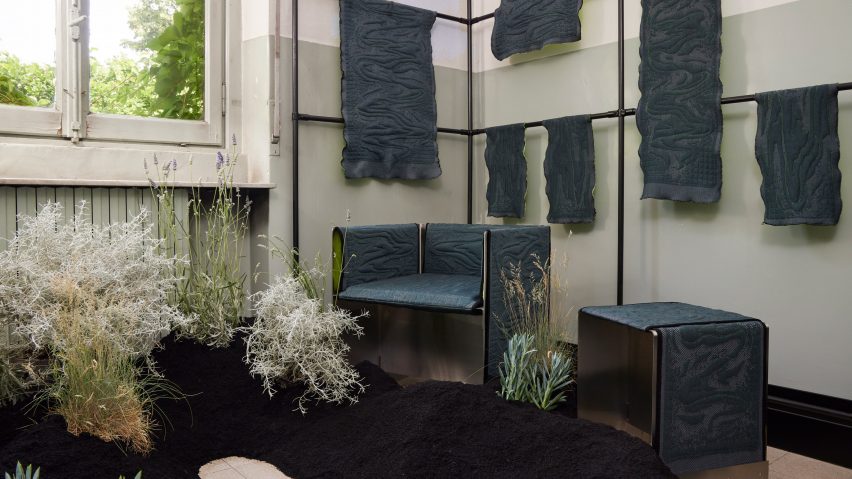
Prowl and Byborre 3D-knit images of Californian wildfires into seating upholstery
Californian practice Prowl Studio and textile label Byborre are showcasing 3D-knitted textiles informed by Californian wildfires at the Exposure Therapy exhibition during Milan design week.
The fabric was used to upholster a collection of seats that are set within the exhibition at Alcova, a former military hospital and one of Milan design week's main exhibition venues.

"The exhibition starts at the height of a raging California wildfire then transitioning to a world in which the charred Earth has regenerated and healed itself," said Prowl Studio co-founder Lauryn Menard.
"This is the optimistic component that we believe is necessary for forward movement and growth in the design industry," she told Dezeen.
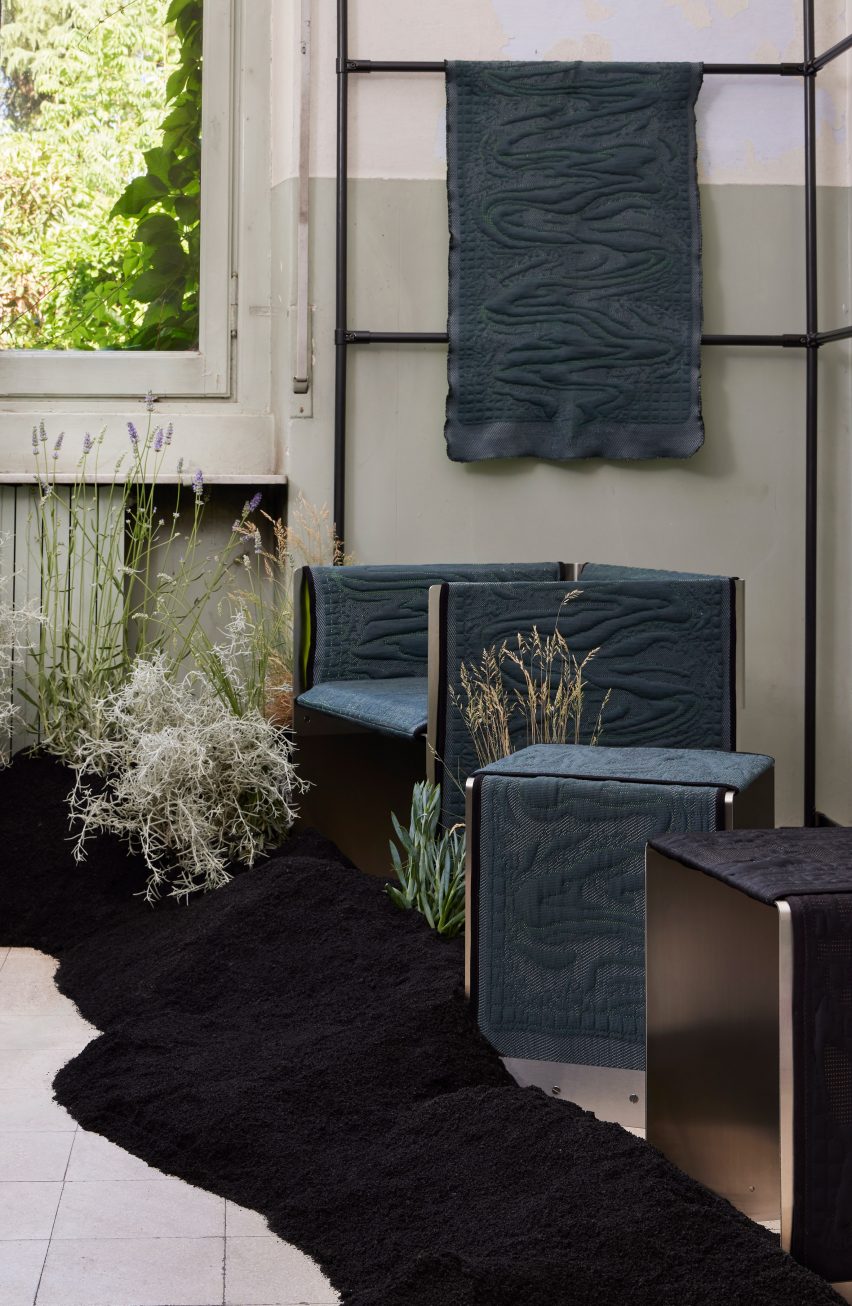
To make the material, the studio gathered a mix of photographs found in news articles about wildfires in California such as Camp Fire – a deadly fire that started on Camp Creek Road in California in 2018.
These photographs were then translated by hand into digital sketches on an iPad, which is when the studio decided to make the images look more abstract.
The resulting patterns subtly reference wildfires, with trails that recall burned trees, smoke and flames.
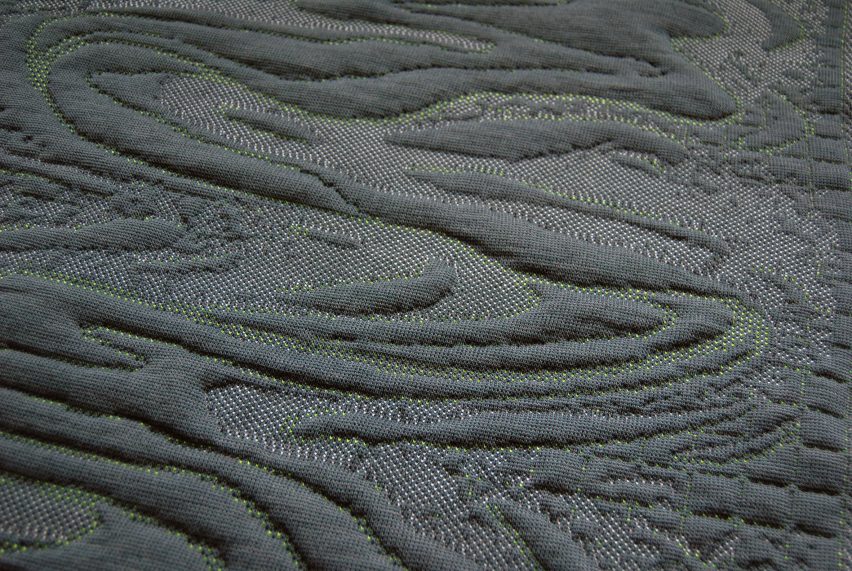
Prowl Studio collaborated with Byborre to 3D-knit the fabrics using Byborre Create – a digital tool that allows anyone to design complex 3D-knitted fabrics.
3D knitting is a fabrication method that combines digital pattern-making with knitting. The technology enables users to print complex designs at scale and quickly multiply a pattern in different sizes.
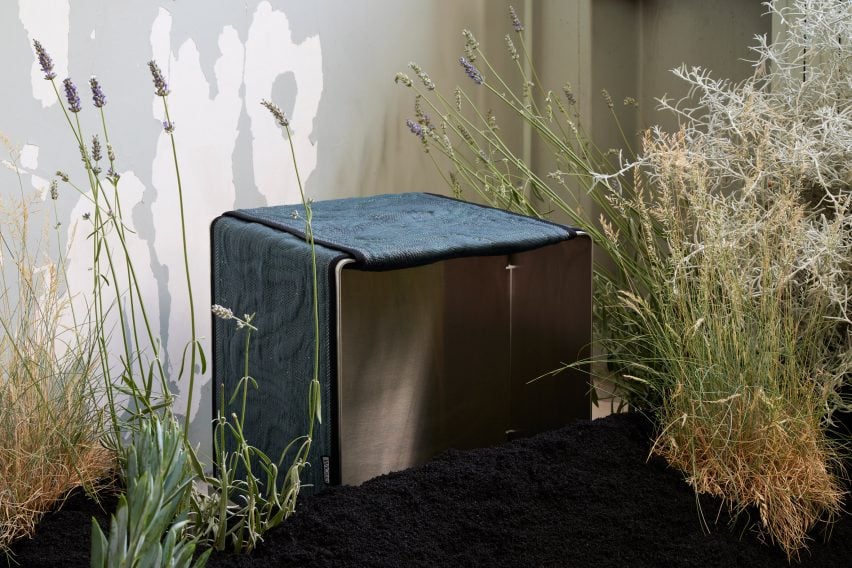
"As we got to know the machines and their capabilities, our patterns and textures took on a more complex form," said Prowl Studio co-founder Baillie Mishler.
"The technology allows for the machines to knit only what is needed for the pattern of the furniture which can eliminate waste otherwise seen in conventionally cut-and-sew assembly method," she told Dezeen.
In total, seven iterations of the material were produced from recycled polyester yarns found in recycled clothes.
The resulting fabric is three-quarters of an inch thick and is used to upholster a range of stainless steel seats such as armchairs and stools which were made locally in Richmond, California.
It comes in two reversible variations. One comes in a dark blue and neon green while the other is black on one side and brown on the other. Both have black piping along the edge.
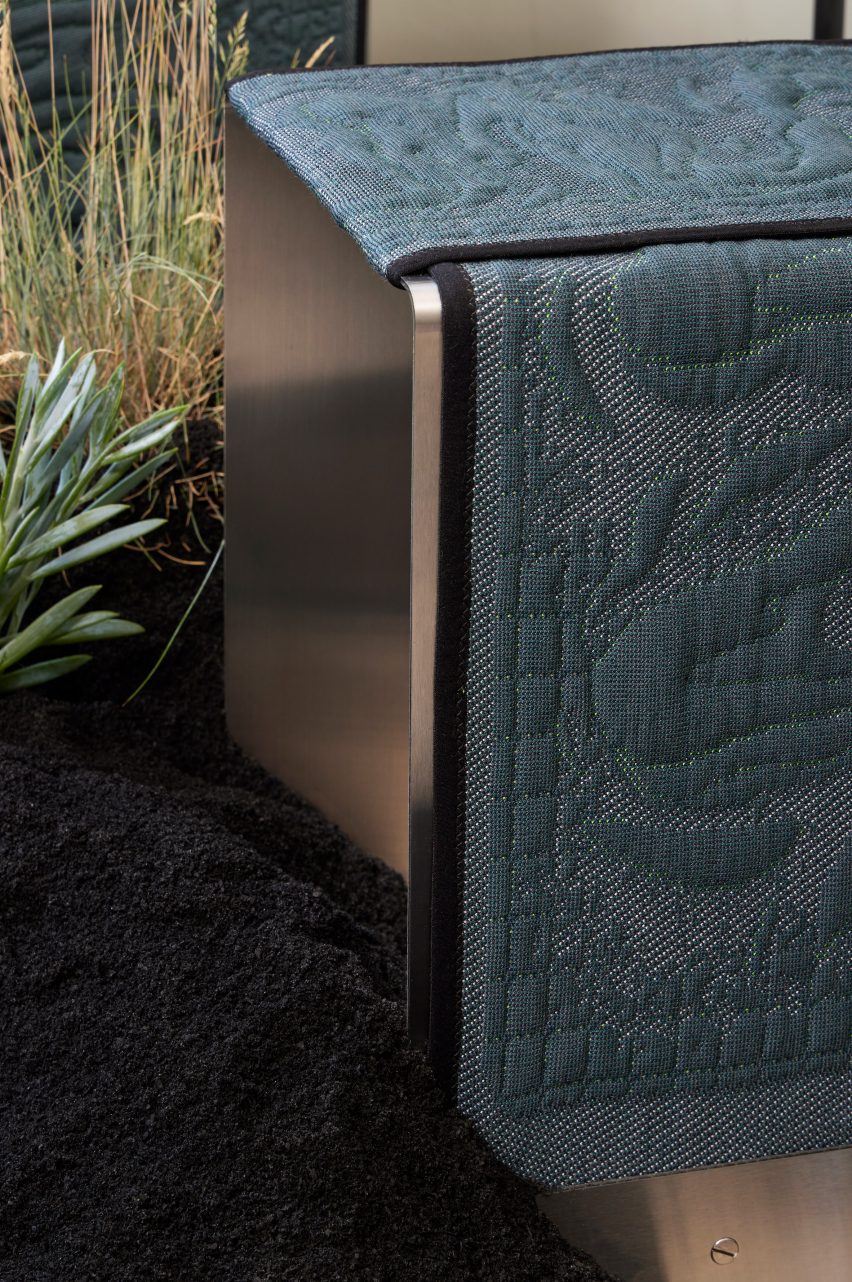
In addition to the furniture pieces on display at Exposure Therapy, there are animations by designer Brendi Wedinger that depict burning wood transforming into new ecosystems.
On the ground outside the exhibition room, the studio planted biochar – a black residue made of carbon and ashes – from California. As visitors look out of the window they can see plants growing from the ashes, echoing how the landscape looks in the aftermath of a wildfire.
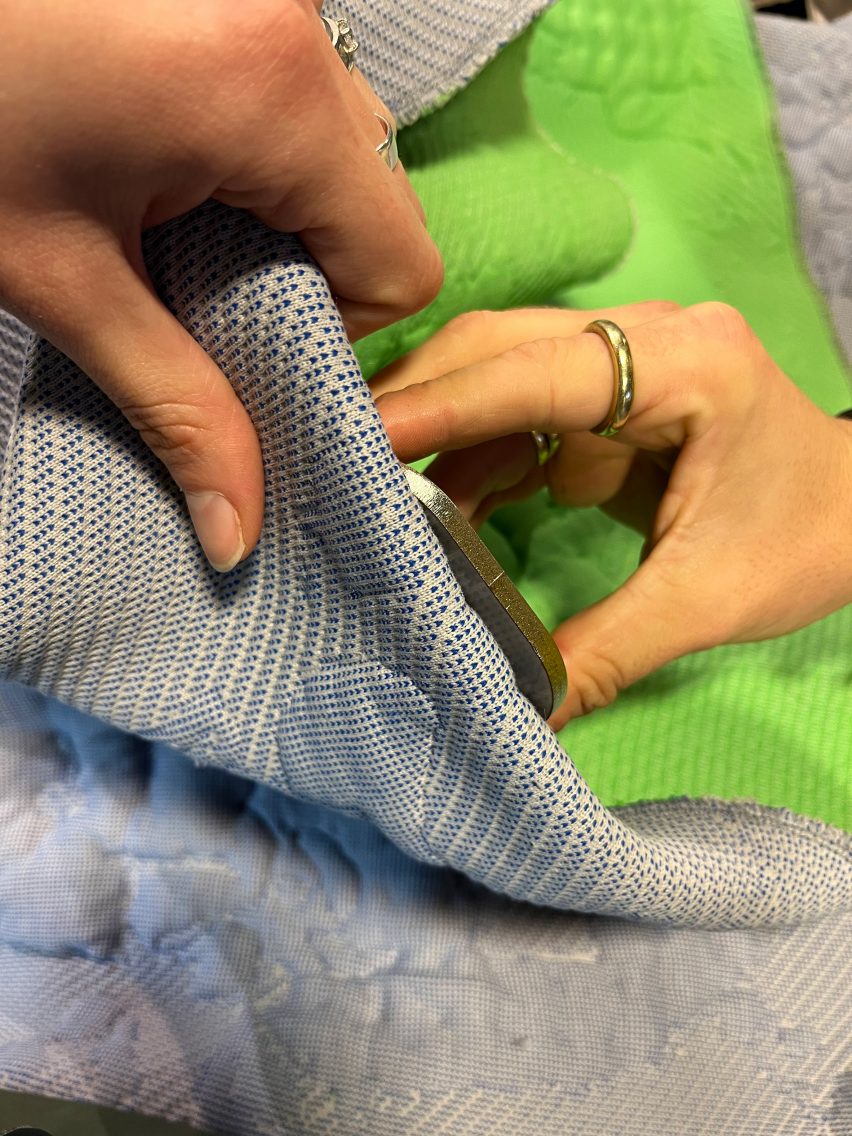
Many designers are using trees to raise awareness about the climate change emergency. Design studio Superflux created a forest installation of over 400 fire-blackened pine trees at Vienna Biennale. Dezeen rounded up five designers planting trees to highlight climate change.
The photography is by Noah Webb.
Exposure Therapy is part of Milan design week 2022, which takes place from 6 to 12 June 2022. See our Milan design week 2022 guide on Dezeen Events Guide for information about the many other exhibitions, installations and talks taking place throughout the week.